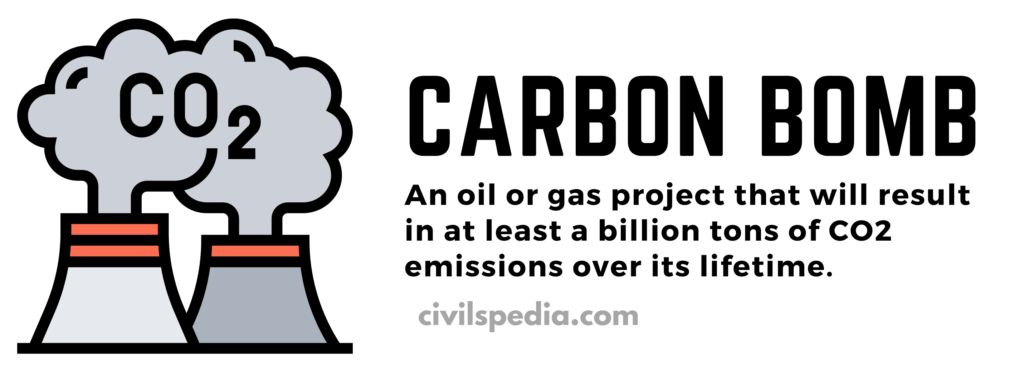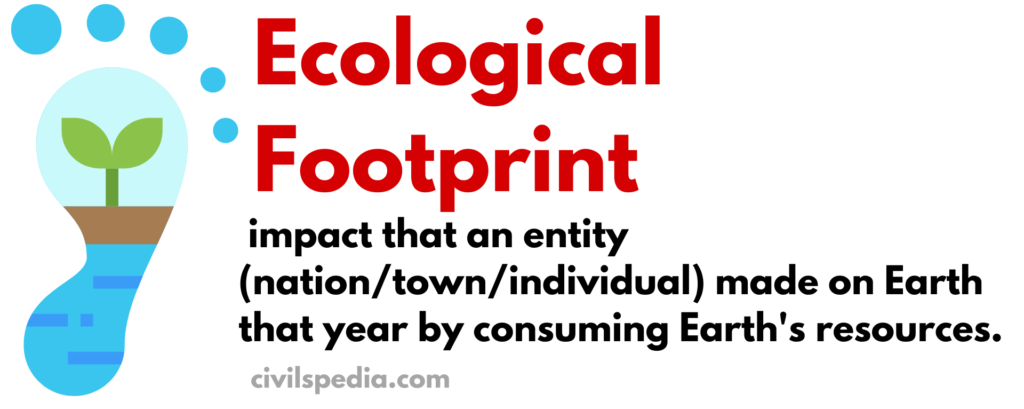Last Updated: July 2025 (Concept of Climate Change)
Table of Contents
Concept of Climate Change
This article deals with ‘Concept of Climate Change – UPSC.’ This is part of our series on ‘Environment’, an important pillar of the GS-3 syllabus. For more articles on Science and technology, you can click here.
What is Climate?
- Climate is often described as average weather
- The classical period is 30 years.
What is Climate Change?
- Climate Change is the periodic modification of the usual weather of a place. This change could be in the form of a change in the average temperature or precipitation pattern.
- The rate of climate change is dependent on causal factors, which may be gradual or drastic, regional or global.
The causes of Climate Change can be broadly divided into natural and anthropogenic causes as follows
| Natural Factors | 1. Changing physiology of the Earth 2. Volcanism 3. Changing Carbon Sink |
| Anthropogenic Factors | 1. Green House Gas Emissions 2. Atmospheric Aerosols 3. Changing land-use pattern |
What is Global Warming?
- Global Warming is the increase in the average temperature of Earth’s atmosphere leading to changes in global climate patterns.
- The primary reason behind global warming is the addition of an excessive amount of Green House Gases by humans since the inception of the Industrial Revolution.
Green House Effect
The Earth gets heat from the Sun in the form of short waves (like sunlight). These short waves pass through the atmosphere easily and warm the Earth’s surface. Once the Earth’s surface is heated, it sends this heat back into the atmosphere in the form of long waves (like infrared radiation). But here’s the catch — some gases in our atmosphere, called Greenhouse Gases (GHGs), trap these long waves. They allow sunlight in but stop some of the heat from escaping back into space.
This trapped heat warms the atmosphere — this is known as the Greenhouse Effect.

The Greenhouse Effect is completely natural and very important. Without it, the Earth would be about 33°C colder than it is today. That means most of the Earth would be frozen, and life would not be possible. So, while we hear a lot about it in the context of global warming, remember: a natural greenhouse effect is necessary for life.
Over the last few centuries, human activities such as burning fossil fuels (coal, petrol, diesel), deforestation, industrial processes, and large-scale agriculture have added more and more greenhouse gases to the atmosphere. As a result, the natural balance has been disturbed. The concentration of of greenhouse gases has increased, trapping too much heat. Now, less heat is escaping into space, causing the Earth’s temperature to rise abnormally. This is known as Global Warming
Gases which show the Green House Effect

1. Water Vapour
- Water Vapour is the most abundant GHG, but it doesn’t play an essential role in climate change as it spends a very short time in the Earth’s atmosphere.
- The water vapour varies rapidly with the season, altitude and region.
2. Carbon Dioxide
- Carbon Dioxide is the most crucial GHG in climate change as it is produced naturally and through anthropogenic activities.
- Natural sources of CO2 include animal respiration and volcanic eruptions. On the other hand, anthropogenic causes include burning fossil fuels and deforestation.
3. Methane
- The primary sources of Methane are the decomposition of organic matter and the digestion process of ruminants (like cows, goats etc.).
- But Green House potential of Methane is far more than that of Carbon Dioxide. Hence, even a lesser amount of Methane can cause much more damage.
4. Nitrous Oxide
- Nitrous Oxide is a very powerful Green House Gas that is produced during the manufacturing and use of nitrogenous fertilizers.
5. Chloro Floro Carbons (CFCs)
- CFCs are manmade chemicals used in refrigerants and air conditioners, having considerable GHG potential and posing a great danger to Earth’s Ozone Layer.
Factors affecting the Climate Change
Climate Change resulting from the change in energy entering and leaving the planet’s system can be caused by natural and anthropogenic factors.

Natural Causes
Natural causes include continental drift, volcanoes, ocean currents, the Earth’s tilt, and comets and meteorites.
1. Continental Drift and Plate Tectonics
- Due to plate tectonics, continents keep on changing their position.
- This drift impacts the climate because it changes the position and features of landmasses, such as a change in the flow of ocean currents and winds, which affects the climate.
2. Milanković Cycle / Variations in the Earth’s Orbit
A Serbian scientist named Milutin Milanković discovered in the 1900s that the way the Earth moves around the Sun isn’t always the same. Over thousands of years, the shape of Earth’s orbit, its tilt, and its wobble all change slowly. These changes happen because of the gravitational pull from the Sun, the Moon, and even other planets. Together, these movements are called Milanković Cycles.
Here’s how they affect the climate:
- Sometimes, the Earth is tilted more or less, which changes how much sunlight different parts of the Earth receive.
- Sometimes, the Earth’s orbit is more round or more oval, which affects how close or far we are from the Sun during different seasons.
- Sometimes, the Earth wobbles like a spinning top, which shifts the timing of seasons.
All these small changes add up over thousands of years and can cause natural shifts in Earth’s climate, like ice ages (glacial periods) or warmer times (interglacial periods).
3. Volcanic Activity
- Volcanic eruptions result in an outburst of Green House Gases (especially Sulphur dioxide) and ash, impacting climatic patterns.
- For example, massive volcanic eruptions 56 million years ago raised the global temperature by 8° C, and it took around 50,000 years to stabilize the climate.
4. Ocean Currents
On longer time scales, thermohaline circulation plays a crucial role in redistributing heat by extremely slow and deep transportation of the ocean water and redistributing the heat globally.
Anthropogenic (Human Caused) Factors
1. Green House Gases
- Natural Green House Effect helps make Earth a habitable place by maintaining the average temperature on Earth at around 14°C instead of -19°C without the Green House Effect.
- But human activities can increase the concentration of Green House gases leading to global Warming.
2. Excessive Deforestation
- Excessive Deforestation has been carried out worldwide as a source of wood and to convert forest land to agricultural land. Dense forests help absorb carbon dioxide and reduce the Green House Effect.
Forcings
Forcings mean the initial drivers of climate change, such as insolation, Green House Gases, aerosols, smoke, dust etc.
You can think of forcings like someone turning the knob on a heater or cooler — they are the initial reasons why Earth’s temperature goes up or down.

Feedback Effect
Feedbacks are the processes that can amplify or reduce the effects of forcings.
In other words, due to the warming of the Earth, numerous changes occur in Earth’s atmosphere, which can impact the temperature. These factors are called Feedback impacts. Some of these changes can increase the temperature, while others can cool down the atmospheric temperature.
1. Feedback from Water Vapour
- Water vapour is one of the most crucial feedback effects. A slight warming of the Earth due to more sunlight or an increased greenhouse effect will increase the quantity of water vapour in the atmosphere. As water vapour is also a greenhouse gas, the extra water vapour will increase the greenhouse effect even more. Thus water vapour has an amplifying effect on global warming.
2. Feedback from Snow and Ice-Cover
- The feedback effects from ice and snow-covered surfaces are similar. When the climate is cold, there is a lot of ice and snow on Earth, and the shiny surface reflects back sunlight to make it colder. But warmer climate results in lesser snow which leads to less reflection of solar radiation to outer space and increased warming.
3. Feedback from Clouds
- All clouds both cool the Earth by reflecting sunlight into space and warm it up by absorbing heat from the surface.
- The feedback effect depends upon the type of cloud.
- Thin Cirrus Clouds (which appear high up in the atmosphere) generally have a warming effect.
- On the other hand, low Cumulus and Stratus clouds have a cooling effect.

Carbon Footprint
- Carbon footprint measures the total GHG emissions (under Kyoto Protocol) caused directly & indirectly by a person, organization, event or product.
- GHGs under Kyoto Protocol are
- Carbon Dioxide
- Methane
- Nitrous Oxide
- Hydro Fluro Carbon
- Per Fluro Carbon
- Sulphur Hexaoxide
- Carbon Footprint is expressed as tons of CO2 equivalent (tCO2e). tCO2e is calculated by multiplying the emissions of each of 6 GHGs by their 100-year Global warming potential.
How can I reduce my Carbon Footprint?

Global Warming Potential
Global Warming Potential for a gas is the measure of the total energy that a gas absorbs over a particular period, usually 100 years, compared to Carbon Dioxide.
| Gas | GWP | Lifetime years |
| CO2 | 1 | 50-200 |
| CH4 | 21 | 12 |
| Nitrous oxide | 310 | 120 |
| HFCs | 140-12000 | 1-270 |
| PFCs | 6500-9200 | 800-50,000 |
| SF6 | 23,900 | 3200 |
Side Topic: Carbon Bombs

- It is “an oil or gas project that will result in at least a billion tons of CO2 emissions over its lifetime.”
- As of the end of 2022, there are 195 carbon bomb projects worldwide. These include projects such as
- Carmichael Coal Project in Australia, owned by the Adani Group
- Gevra Coal Mines in Chhattisgarh, owned by Coal India
- Rajmahal Coal Mines in eastern Jharkhand
Ecological Footprint & Debt
Ecological Footprint

- It is the measure of human demand on the Earth’s ecosystem. The ecological footprint represents the impact that an entity (nation/town/individual) made on Earth that year by consuming Earth’s resources.
- Global Hectare is the average productive land and water an individual requires to produce all the resources it consumes. In 2007, it was 2.7 Hectares /Person.
Water Footprint
It is the volume of freshwater used to produce goods and services by an individual or community.
It is of the following types
| Blue WFP | Blue Water Footprint is the volume of freshwater evaporated from global blue water resources, such as rivers, ponds, lakes, wells, etc., for producing goods and services used by an individual or community. |
| Green WFP | Green Water Footprint is the volume of freshwater evaporated from global green water resources such as moist lands, wetlands, farms, soil etc., for producing goods and services used by an individual or community. |
| Grey WFP | Grey Water Footprint is the volume of fresh water polluted for producing goods and services used by an individual or community. |
Ecological Debt
Ecological Debt can be defined as the amount by which the consumption of resources from within an ecosystem exceeds the ecosystem’s regenerative capacity.

Ecological Debt Day/Earth Overshoot Day
- Ecological Debt Day or Earth Overshoot Day refers to the calendar date when the total resources consumed by humanity will exceed the capacity for Earth to generate those resources that year.
- It is not a fixed date but keeps on changing each year. WWF and Global Footprint Network decide it.

Side Topic: Earth Day
- It is celebrated on 22 April (every year) to increase awareness of environmental safety among ordinary people.
- UNESCO organizes it.
